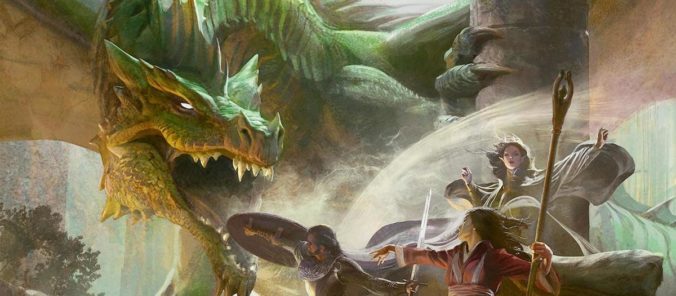I’m very much looking forward to introducing more people to Dungeons & Dragons. The published materials for that purpose within the Starter Set are quite fine, but even moreso than the content within the books, I appreciate the flexibility of it. It’s been a while since I’ve put together a world into which others will be introducing characters with their own motivations, drives, fears, and goals. I want to flex those muscles again.
As much as I like the Forgotten Realms setting, what’s the harm in creating what might be considered a parallel world on the Prime Material Plane? Similar, but different in many ways. Same maps, different names. Similar factions, different motivations. A history all its own that resonates with the high points of established materials. If nothing else, it’s a great exercise in world-building.
Even when set in the modern era on Earth, authors tend to create their own worlds when they set out to tell a new story. Look at Jim Butcher’s Dresden Files, Seanan McGuire’s October Day, Diane Duane’s Young Wizards, Lev Grossman’s the Magicians — the list goes on. I know that these are all fantasy examples, but considering this pontification is rooted my D&D ambitions, they’re what come to mind for me. I’m sure you can think of your own.
Speaking of D&D, there’s been quite a bit written about the Starter Set called Lost Mines of Phandelver. For my part, my desire is not just to integrate it into a slightly different world of my own creation, but also deepen and flesh out the characters within the adventure. Even within a D&D campaign, I’m not terribly fond of one-dimensional characters, be they cackling villains or glorified vending machines. These are, for the most part, people; people have thoughts and feelings, they have hopes and dreams, they make mistakes. To me, it’s important to convey those things and demonstrate that the protagonist (or in this case, the player character) are not alone in the world in terms of beings with agency and identity.
Not long ago, I began running an adventure for some friends at a neighbor’s house. Upon a cursory reading, I got a notion for how the local innkeep behaved and what his relationships were like. On the fly, as the players interacted with him, I created the character’s partner and began role-playing their interactions in front of the players. It was just a little flavor, a bit of color splashed into the black and white text of the pages in front of me. And it went over incredibly well.
I can’t overstate the importance of taking just a little time to flesh out parts of your world, whatever you’re creating it for and however you’re creating it. Tolkien and Martin might at times get carried away with descriptors, but would we care so much about their tales and their many characters without those passages, that depth? Their worlds persist because of the way they were built. Don’t you want the same for yours?
On Fridays I write 500 words.



